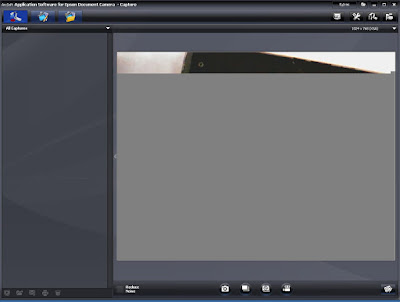If your sending email to Pharos Mobile Print it has to verify your email address. From the documentation MobilePrint and Uniprint Integration located on the Pharos install media.
MobilePrint first checks if the user’s email address is in its internal cache (if the user has printed before their address will already be in the cache). If it is not found MobilePrint then checks in the Pharos Database.If you are sure that the email account is correctly set on the user account. Either from Pharos Administrator or the DB.
SELECT [user_id] ,[active] ,[id] ,[email] FROM [pharos].[dbo].[users] where id like 'username1'
If its set and the service is still asking your accounts to register their email address instead it means the Pharos MobilePrint Server for what ever reason can't connect to the Pharos MobilePrint Auth Service. Check that the firewall port is open on the print server. Port 808. However if you have this issue refer to the Mobile Print Installation and Configuration Guide and check all the ports because its likely you have more than just this one firewall port issue.
The Pharos MobilePrint Log, which i set to “c:\PharosLogs” will display the following.
[2012/10/11 15:10:24 PDE8 T018 d MP_ConsignmentTracker] 84e2ba58-9023-561d-af42-3ee75a505f29 Indexing email from 'test1@test.nku.edu' [2012/10/11 15:10:24 PDE8 T05F d MP_ConsignmentTracker] 84e2ba58-9023-561d-af42-3ee75a505f29 Starting Workflow for sender 'test1@test.nku.edu' [2012/10/11 15:10:24 PDE8 T05F d MP_ConsignmentTracker] 84e2ba58-9023-561d-af42-3ee75a505f29 Sender email address not in cache [2012/10/11 15:10:45 PDE8 T025 w MP_WorkflowService] An attempt was made to resume a Workflow Instances that has either completed or been deleted. This request will now be ignored. [2012/10/11 15:10:45 PDE8 T026 e MP_WorkflowServiceExtension] An error occurred while attempting to process a response on the 'authentication' queue for message '465738ac-0a35-5c90-bfe2-b038a51f7dbd'. [2012/10/11 15:10:45 PDE8 T026 e MP_WorkflowServiceExtension] Exception: The communication object, System.ServiceModel.Channels.ServiceChannel, cannot be used for communication because it is in the Faulted state. Type: CommunicationObjectFaultedException StackTrace: at System.ServiceModel.Channels.CommunicationObject.Close(TimeSpan timeout) at System.ServiceModel.Channels.ServiceChannelFactory.OnClose(TimeSpan timeout) at System.ServiceModel.Channels.ServiceChannelFactory.TypedServiceChannelFactory`1.OnClose(TimeSpan timeout) at System.ServiceModel.Channels.CommunicationObject.Close(TimeSpan timeout) at System.ServiceModel.ChannelFactory.OnClose(TimeSpan timeout) at System.ServiceModel.Channels.CommunicationObject.Close(TimeSpan timeout) at System.ServiceModel.ChannelFactory.System.IDisposable.Dispose() at MobilePrint.Service.Workflow.Extensions.AuthenticationManager.<.ctor>b__0(AuthenticateResponse response) [2012/10/11 15:10:45 PDE8 T026 e MP_RestInterface] An unhandled error occurred while processing a REST command. [2012/10/11 15:10:45 PDE8 T026 e MP_RestInterface] Exception: The communication object, System.ServiceModel.Channels.ServiceChannel, cannot be used for communication because it is in the Faulted state. Type: CommunicationObjectFaultedException StackTrace: at System.ServiceModel.Channels.CommunicationObject.Close(TimeSpan timeout) at System.ServiceModel.Channels.ServiceChannelFactory.OnClose(TimeSpan timeout) at System.ServiceModel.Channels.ServiceChannelFactory.TypedServiceChannelFactory`1.OnClose(TimeSpan timeout) at System.ServiceModel.Channels.CommunicationObject.Close(TimeSpan timeout) at System.ServiceModel.ChannelFactory.OnClose(TimeSpan timeout) at System.ServiceModel.Channels.CommunicationObject.Close(TimeSpan timeout) at System.ServiceModel.ChannelFactory.System.IDisposable.Dispose() at MobilePrint.Service.Workflow.Extensions.AuthenticationManager.<.ctor>b__0(AuthenticateResponse response) at MobilePrint.Core.Workflow.Library.QueueManager.<>c__DisplayClass1`1.b__0(BaseQueueResponse o) at System.Reactive.AnonymousObserver`1.Next(T value) at System.Reactive.AbstractObserver`1.OnNext(T value) at System.Reactive.Subjects.Subject`1.OnNext(T value) at MobilePrint.Core.Workflow.Library.QueueManager.PushResponse(String queueName, BaseQueueResponse packet) at MobilePrint.Service.Workflow.RestResource.WebResource.PushQueue(String queueName, HttpRequestMessage request) [2012/10/11 15:10:45 PDE8 T025 w MP_WorkflowService] An attempt was made to resume a Workflow Instances that has either completed or been deleted. This request will now be ignored. [2012/10/11 15:10:45 PDE8 T026 e MP_WorkflowServiceExtension] An error occurred while attempting to process a response on the 'authentication' queue for message 'e71cfa3f-0d71-52b2-a538-9ab27ed45271'. [2012/10/11 15:10:45 PDE8 T026 e MP_WorkflowServiceExtension] Exception: The communication object, System.ServiceModel.Channels.ServiceChannel, cannot be used for communication because it is in the Faulted state. Type: CommunicationObjectFaultedException































